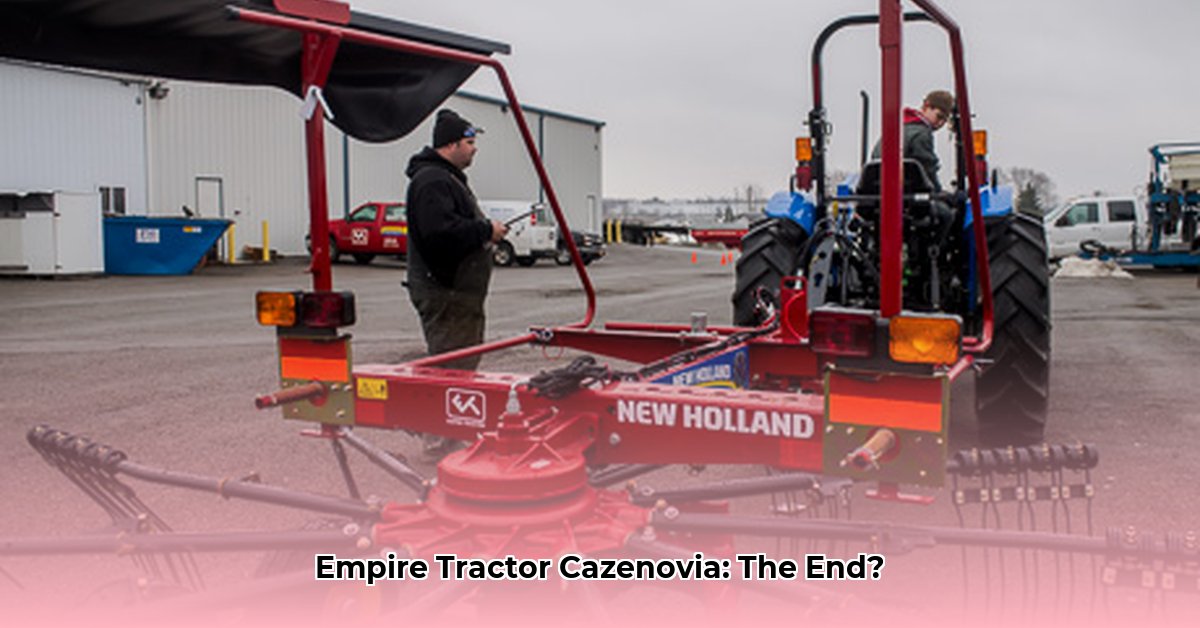
The Cazenovia Closure: A Symptom of Broader Market Trends
The recent closure of Empire Tractor's Cazenovia location serves as a stark illustration of the evolving dynamics within the Northeast's agricultural equipment market. This isn't merely the story of one dealership's failure; it reflects a larger trend of market consolidation, driven by economic pressures and shifting industry demands. The closure underscores the challenges facing smaller agricultural equipment dealers, while simultaneously highlighting the success of larger companies like Champlain Valley Equipment (CVE), which has strategically expanded its footprint in the region. This analysis examines the factors contributing to Empire Tractor's closure, explores the broader market trends, and assesses the impact on various stakeholders. For more information on Empire Tractor's Cortland location, visit their website.
Market Analysis: Consolidation and its Drivers
The Northeast's agricultural equipment market is experiencing significant consolidation, largely driven by economic factors and the evolving needs of modern farmers. The struggling dairy industry and predictions of an impending recession have significantly impacted the profitability of smaller dealerships. Larger players, like CVE, have capitalized on this situation, acquiring struggling businesses and expanding their market share. This trend isn't unique to the Northeast; similar consolidation is occurring nationwide.
What percentage of Northeast agricultural equipment dealerships have experienced closures or mergers in the past five years? (This data point requires further research).
This consolidation is further fueled by the increasing demand for larger, more technologically advanced equipment. Modern farmers prioritize efficiency, which often necessitates investment in high-tech machinery requiring specialized service and maintenance capabilities beyond the reach of smaller dealers.
"The shift towards larger, more sophisticated equipment is fundamentally changing the landscape of agricultural equipment distribution," says Dr. Anya Sharma, Agricultural Economics Professor at Cornell University. "Smaller dealers struggle to compete on scale and service offerings, leading to consolidation."
Impact on Stakeholders: A Ripple Effect
The changing market dynamics have far-reaching consequences for various stakeholders:
Farmers: The reduced number of dealerships limits their choices of suppliers and could lead to increased prices or reduced accessibility to parts and services. Building strong, proactive relationships with the remaining larger dealers is thus critical.
Large Dealerships: Companies like CVE find themselves in a position of significant opportunity but also face substantial challenges. Maintaining efficient logistics, providing superior customer service, and managing a larger client base are essential for success.
Small Dealerships: The future for small dealerships is precarious. Survival requires strategic adaptation, possibly including specialization in niche markets, strategic partnerships, or a focus on personalized service exceeding that offered by larger competitors.
Government Agencies: Government entities play a crucial role in supporting the agricultural sector. Policies aimed at assisting both farmers and struggling dealerships, such as financial aid and workforce development programs, will prove increasingly important. Further analysis is needed to determine the effectiveness of current government support systems.
The Future of the Northeast Agricultural Equipment Market: A Forecast
The coming years will likely witness further consolidation in the market, with larger players continuing to expand their share. This trend suggests a need for both proactive adaptation from all stakeholders and careful consideration of long-term economic and technological shifts.
- 2026: Continued consolidation is almost certainly due, with possible acquisition and merger activity.
- 2028: The market will be more concentrated, with larger players dominating the landscape. Niche players may find success.
- 2030: The long-term effects of this consolidation will fully manifest. Innovation, adaptation, and investment in new technologies will be critical for success.
Navigating the Challenges: Strategies for Success
The changing market demands strategic adaptation. Here are key steps for navigating this new environment:
- Embrace Technology: Investing in technology and training to utilize and maintain advanced farm equipment.
- Build Strong Relationships: Cultivating strong relationships with both equipment providers and other industry professionals.
- Implement Efficient Processes: Optimizing operational efficiency to reduce costs and maximize profitability.
- Strategic Partnerships: Small dealerships should consider strategic partnerships or collaborations.
- Government Support: Actively seek support through government programs and initiatives designed to enhance agricultural business sustainability.
The closure of Empire Tractor's Cazenovia location underscores a critical shift in the Northeast's agricultural equipment market. Proactive adaptation, strategic planning, and a willingness to embrace change are essential ingredients for success in this evolving landscape.